#XIX Europe
Text

#XIX Europe#ethnically clean state ideology#Presence of gypsies and juish populations in Europe hampers the ethnically pure state ideology (XIX colonialisms)#hegemonic hate against juish#pogrom#Sionism created in Vienne´s Bourgoisie#theodor herzl#1897#“We will create an ethnically clean colonial juish state!”#BUND: juish revolutionary workers against sionism#religious juish against sionism#Balfour#christian sionist#proud of the declaration: juish out!#1905: speech and law against revolutionary juish#1917: Declaration#1933: Havaara agreement between Nazis and Sionists#60 000 juish out of Germany#Palestine#sionist institutions created before WWII !#1901: KKL juish national funds#1922: INSTADRUM sindicate#1937: MEKOROT#1921: SOLEBONE#APOALIM#Palestinian pay for European Antisemitism#Europe never opened its borders and states to juish after WWII#Antisemite Sionists´s dollars#today 40 milion of Christian Sionists in US#colonialism
19 notes
·
View notes
Text
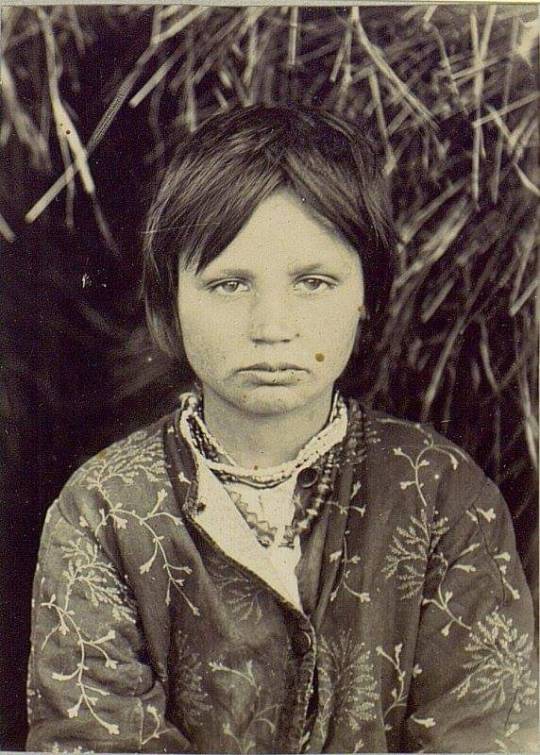

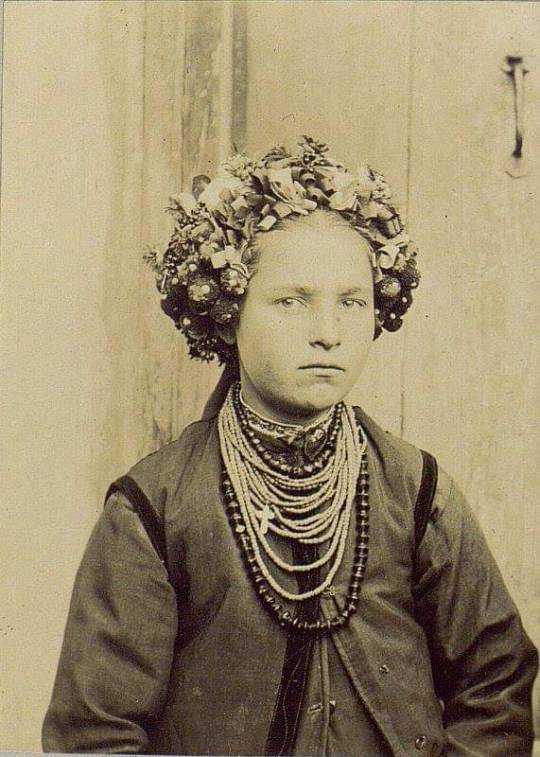



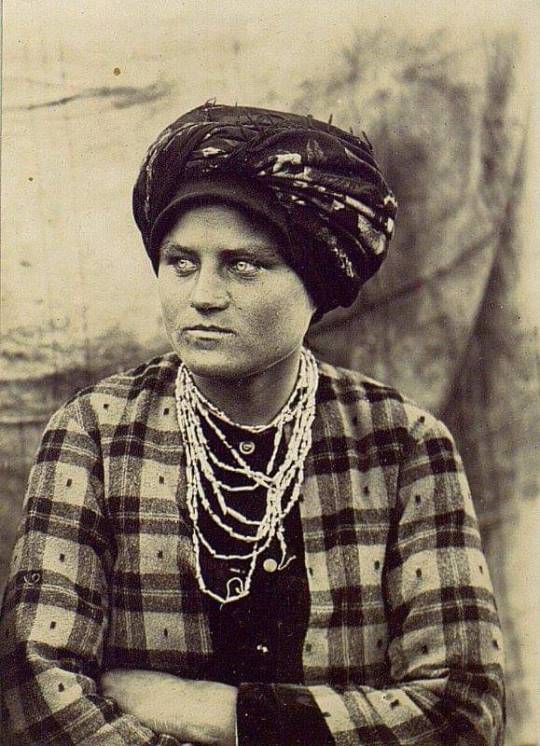



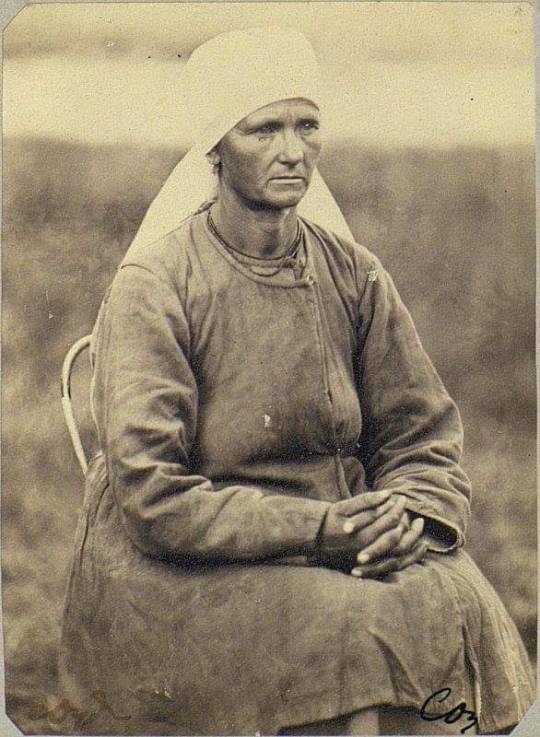

Portraits of ukrainian peasant women from Poltava region by Samiylo Dudin (1894)
Портрети жінок селянок з Полтавскої області зняті Самійлом Дудіним (1894)
#ukraine#eastern europe#photography#vintage photography#anthropology#portraits#people#black and white photography#faces#xix century#19th century#women#ethnic types#types
512 notes
·
View notes
Text

Russian circus performer Anatoliy Durov near the portrait of his wife Teresa Stadler (1882)
#Россия#Russia#vintage#photography#русская культура#russian culture#culture#Анатолий Дуров#Anatoliy Durov#Europe#russian#history#black and white#european#vintage photography#1880s#1882#19th century#XIX century
29 notes
·
View notes
Text





“Why seek ye the living among the dead?, by John Roddam Spencer Stanhope
#england#victorian england#art#painting#classic art#illustration#traditional illustration#xix#xix century#catholic#catholiscism#catholic church#jesus#jesus christ#christian aesthetic#christianity#son of god#john roddam spencer stanhope#europe#oil on canvas#oil painting
18 notes
·
View notes
Text

Romanian Athenaeum - XIX century neoclassical concert hall, Bucharest
#romania#eastern europe#europe#athenaeum#xix century#neoclassical#architectural styles#architecture#urban architecture#scenery#aesthetic#columns#historic monuments#clouds#sky#flowers#city flowers#city/town#cityscape#dati un leu pentru ateneu
39 notes
·
View notes
Text





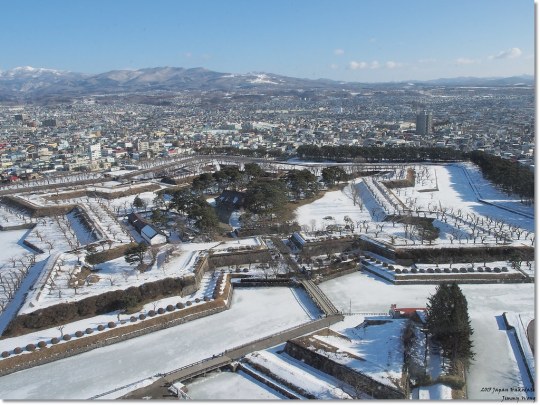

Capitulo 1:ヨーロッパの雰囲気が漂う五稜郭/Goryokaku a hallmark with European airs.
-
Sean bienvenidos a una nueva entrega de cultura e historia japonesa, en este caso vamos a hablar sobre Goryokaku, localizado en Hakodate en la prefectura de Hokkaido al norte de la isla de Honshu.
-
Toponimia de Hokkaido en, el siglo XIX se llamaba Ezo, último reducto del shogunato contra el nuevo orden creando una república (1868-1869). Hay que destacar que Japón estubo cerrado al mundo durante 260 (1603-1868), este periodo se le conoce como periodo Edo, bajo el régimen militar Tokugawa.
-
En 1854 finalizaron los tratados de amistad con Estados Unidos, Gran Bretaña, Rusia. Hakodate se convirtió en una ciudad portuaria abierta al mundo exterior y en 1858, concluyendo el tratado comercial y al año siguiente se convirtió en puerto comercial. Hisaburo Takeda, estudio en Europa y se formó en fortalezas tipo estrelladas de traza italiana, en 1864 se completaron las contribuciones de la fortaleza.
-
Espero que os guste y nos vemos em próximas publicaciones.
-
Welcome to a new installment of Japanese culture and history, in this case we are going to talk about Goryokaku, located in Hakodate in the Hokkaido prefecture north of the island of Honshu.
-
Toponymy of Hokkaido in the 19th century was called Ezo, the last stronghold of the shogunate against the new order creating a republic (1868-1869). It should be noted that Japan was closed to the world for 260 years (1603-1868), this period is known as the Edo period, under the Tokugawa military regime.
-
In 1854 the friendship treaties with the United States, Great Britain, and Russia ended. Hakodate became a port city open to the outside world and in 1858, concluding the commercial treaty and the following year it became a commercial port. Hisaburo Takeda, studied in Europe and trained in Italian star-type fortresses, in 1864 the contributions of the fortress were completed.
-
日本の文化と歴史の新しい記事へようこそ。今回は、本州の北、北海道の函館にある五稜郭について話します。
-
19 世紀の北海道の地名は蝦夷と呼ばれ、共和制を樹立する新秩序(1868~1869 年)に対抗する幕府の最後の拠点でした。 日本は 260 年間 (1603 年から 1868 年まで) 鎖国していたことに注意してください。この期間は、徳川軍事政権下の江戸時代として知られています。
-
1854 年にアメリカ、イギリス、ロシアとの友好条約が終了しました。 函館は対外に開かれた港湾都市となり、1858年に通商条約を締結し、翌年には商業港となりました。 武田久三郎はヨーロッパに留学し、イタリアの星型要塞で訓練を受け、1864 年に要塞の建設を完了しました。
source/ソース:photos internet/写真インターネット
#japan#history#architecture#Hakodate#Hokkaido#republic#unesco#fortitude#geography#perdioedo#Erameiji#archaeology#Goryokaku#日本#歴史#建築#函館#北海道#共和国#ユネスコ#慰霊#地理#永明寺#考古学#五稜郭#Photography#写真#photographers on tumblr#artists on tumblr
288 notes
·
View notes
Text
Fuck the canons, Book!Hiccup would totally be an Anthropologist or a Sociologist if he lived in the modern world. Not public administrator, not political scientist, not some guy in the social science field that goes for the power. No. He just wants to talk about culture and dinosaurs and how shit happened in Europe XIX century
#httyd#httyd books#book hiccup#hiccup horrendous haddock lll#yes this is personal#still i believe it and would both kill and die to defend it
135 notes
·
View notes
Text
Pathologic and the Town's Russianness: 1
For part 1, let's explore the naming conventions Pathologic uses, and whether its Town characters have Russian surnames.
The names of the townsfolk are remarkably non-Russian
The Kin, of course, have their names in their own Steppe language, which is a conlang that Ice Pick Lodge conscructed based on Mongolic and Turkic (mostly Buryat) tongues. So, no questions with that.
But what about the Town itself, and the names of the people living in it?
For starters, it must be noted that the foundational workings of surnames in Russian are pretty much the same as in most European languages: a surname denotes someone's ancestor's relation to craft (such as the most common surname both in English - Smith, and in Russian - Kuznetsov, meaning exactly the same), kin, appearance feature, or other such concept.
As an inflected language, however, Russian adds special suffixes to its usual roots to arrive at surnames. The most well-known of them is, of course, -ov. In the example above it turns kuznets (smith, as an occupation) into Kuznetsov (Smith, as a surname). It is also used to form the archetypical Russian surname: Ivanov, that is, related to Ivan. It is, however, by far not the only suffix used, and there are multiple others: -in, -tsyn, -shyn, -ev, -tsev, -y, and more.
Most of these allow to construct feminine forms by simple addition of the ending -a (Saburov - Saburova); but some are more complex (Olgimsky - Olgimskaya). Such complexity usually marks suffixes used in other Slavic tongues: -y in particular is often seen in Belorussian and Polish.
With all that in mind, let's explore the names we find in the Town-on-Gokhon. And the thing immediately striking is just how little surnames formed from Russian roots and Russian suffixes there are.
First, there are obviously non-Russian surnames, such as Ravel, Block, Longin, Feugel, Yan, Croy. Most of them appear to come from other European languages.
Is that probable for a Russian Empire stand-in? Yes. It was a multinational state, and there were enough Europeans among the elite for Vyazemsky to bemoan in mid-XIX century that "the Russian God" is "God whose favour falls on Germans". (Then again, hardly surprising under the Holstein-Gottorp-Romanov dynasty, ethnically German and only taking German wives for generations, despite ruling Russia).
Then, there are the surnames with Russian suffixes: Saburov, Stamatin, Lyuricheva, Olgymsky, Dankovsky. But the thing is, none of these have Russian roots! Saburov is based on Tatar (patient, hardy); Stamatin on Greek (persistent, stable); Lyuricheva, Olgymsky and Dankovsky are Slavic-sounding, but appear to be unique to the game's characters. As a side note here, Dankovsky is apparently based on a name from Gorky's Old Izergiel (Danko, a brave who ripped his own heart out to light the way for the rest of his peope).
Now, is that probable? It's stretching the suspension of disbelief a bit. Yes, there had been Tatars among the Russian elite since before the day Kazan was conquered by Moscow, which reflected in their surnames. Yes, priesthood surnames could include Greek roots. And yes, the Western Slavs were also in the Empire. But it's hard to imagine all of these coinciding to entirely drown out the surnames based on Russian roots!
All in all, this distribution sounds like a conscious artistic choice, making such an assemblage less likely for historic Eastern Europe rather than Central one.
As a sort of postscript, for these who could be bothered to read this far down. There's an interesting quirk about the female surnames in the game: in Russian, unless a surname ends with one of the Russian suffixes, it retains its basic form (same as the masculine) even when women use it. Thus, Lara's surname is Ravel, same as her father's; same thing with Croy. But there's a curious exception: the Kains. Their surname is obviously based on the eponymous Biblical character, Cain. The only thing is, Cain is not a Russian word, and thus the women of the family should apparently still have the surname Kain. Yet they do not, they use Kaina - which suggests that their surname uses the Russian suffix -in: just someone related to something called Ka-, perfectly normal, totally a word, no primordial killers in sight.
Whether that is simple wordplay, a way to show the lineage deeply assimilated, a way to take the focus off the Biblical relation, or anything else, is up to the reader to decide.
37 notes
·
View notes
Text
Un peu de contexte historique qui peut être utile pour la lecture du Comte de Monte-Cristo!
Contexte historique et social de l'époque
"Le Comte de Monte-Cristo" se déroule au début du XIXe siècle, une période turbulente marquée par des bouleversements sociaux et politiques en France et en Europe.
1. La chute de Napoléon Bonaparte et la Restauration : L'histoire commence en 1815, peu de temps après la chute de Napoléon Bonaparte lors de la bataille de Waterloo. Après cette défaite, la France est placée sous la Restauration, une période caractérisée par le retour de la monarchie des Bourbons au pouvoir avec Louis XVIII sur le trône. Cette période a été marquée par des tentatives de restaurer l'ancien régime, ce qui a entraîné des tensions sociales et politiques.
2. Les intrigues politiques et les complots : Durant la Restauration, les intrigues politiques étaient monnaie courante. Les rivalités entre différentes factions et les complots pour renverser le gouvernement étaient omniprésents. C'est dans ce contexte que l'intrigue de "Le Comte de Monte-Cristo" se développe, avec des personnages qui manipulent les événements politiques pour servir leurs intérêts personnels.
3. La montée de la bourgeoisie et les inégalités sociales : La Révolution française et les guerres napoléoniennes ont bouleversé l'ordre social traditionnel en France. La bourgeoisie, qui était auparavant exclue du pouvoir politique et social, a gagné en influence et en richesse. Cela a créé des tensions entre les différentes classes sociales, avec une élite aristocratique qui tentait souvent de maintenir ses privilèges et sa suprématie.
Source (spoilers sur le livre à cette page, attention si vous lisez +)
27 notes
·
View notes
Text
The thing about modern white nationalism, as in the idea of a single superior white race all over the world, is that it's very much an US idea, which started on the US history of slavery and segregation. European racists, I mean, anthropologists in the XIX-XX centuries did agree that white people were superior because of course they did, but they were too busy trying to discriminate each other in increasingly narrow racial categories, so you got for example, maps where all of Africa and Asia are painted as the same race, but Europe is divided in dozens of subraces depending on the prejudices of the author. It's morbidly fascinating. You know those jokes where Lovecraft writes about Irish or Italian people like they were aliens? That's exactly that. A German 'anthropologist' in the early XX century would balk at being told he's the same 'white' race as a Polish or an Italian, how dare you.
While this is terrible of course, because this "scientific" racism was used to legitimize imperialism and genocide, there is some dark humour for me in the fact that Hitler complained to Himmler (the director of the SS and the Ahnenerbe, the Nazi archeology division which was NOT made up for Indiana Jones) that his archeologists were embarrasing him because instead of finding the glorious past of the aryan germanic race, all they found was the "ancient germans" were "living in huts" while those "mediterraneans" were building glorious Rome and stuff
This is especially funny when you got all these neo-nazis praising Greece and Rome.
63 notes
·
View notes
Text
Nightmare frontier (Loran) geologic interpretation
Alright, here I am to talk about another detail I noticed while replaying Bloodborne! It has more to do with well the geology of the nightmare frontier and from what it's based on in real life. I like analysis and trying to understand those in video game! But also might bue because I'm a technician geologist too XD Still I will try to stay simple and short.
So The Nightmare frontier in the Nightmare. This optional zone you can unlock thanks to Patches! And where we fight the Amygdala to obtained the Loran's chalice.
Notes : the nightmares are in layers. Mensis nightmare is on top then the frontier, under the fishing hamlet with the boats. And under the hamlet the hunter's nightmare/Yharnam of the dlc. For the one who didn't knew.
Notes 2 : The nightmare frontier is probably a nightmare originating from the region where Loran is (the out place area and the Loran chalice are goos indicator). You know that Pthumerian civilisation far from pthumeru & Yharnam who all become beasts... But if you are into the lore you probably know about Loran and all.
So in the frontiers we can find those strange stone hexagonal columns around :

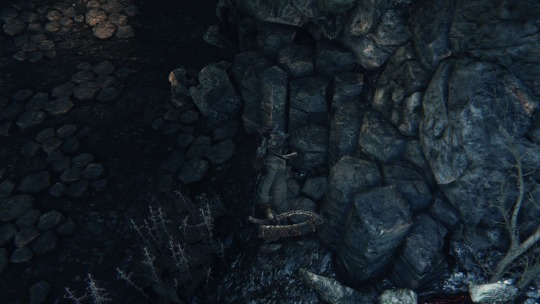
Well it is a real geologic structures! Also named volcanic (basalts) columns, organ pipes etc (orgues volcaniques in French)

Volcanic columns of Panska skala. Source image : https://planet-terre.ens-lyon.fr/ressource/orgues-volcaniques.xml,



So, how it's formed? Well it is a bit complex but I will try to explain simply. You see those are formed from (effusive) volcanism (don't cofound with magmatic plutonism). You see when a volcano create really liquid lava and don't explode it's effusive. The lava cooled fast on the surface (huge thermic difference with the air or water) and don't crystallised, it often formed basalts (this black rock without minerals visible) or similars stone (can be andesite too in that case or even diorite. It's the same "family").
Those columns are not directly made on the surface but meters under the first couch of lava or they can be formed in magmatic veins that came from a magmatic chamber (in the ground) but cooled way faster than the chamber: it can create those or dyke or sills for exemple/ A magmatic chamber who cooled of will be crystallised on the contrary and take a lot of time! (Thousand if not millions of year) Still it's seems those columns take years or century to become rocks. Still it is "fast" on a geological levels.
Apparently with specific conditions temperature it create this hexagonal columns. It is also similar when clay who became dry and cracked on the ground if you prefer.

Anyway those volcanic columns can be found in many places! Europe, Africa, Asia, America etc There are usually millions of years old and we can see them thanks to erosions of the more tender rocks around it.
The first pic I show are at 80/100km north to Prague in Czech Republic. And You know Bloodborne is a bit more based on easter Europe so 👀
Anyway I think this is very cool the devs inspire themself from those! Very Interesting!
SO what it says about Loran region and Bloodborne world then ?🤔 Well I'm not sure but it's sure is very ancient geologic formation and even in XIX century 2 big theories fought about geology so it sure could be see as specials for old civilisation! Especially in link with old great ones or smt. And maybe Loran could be closer to Yharnam than we think.
ALSO
You see those weird ?ball rocks? in the all the nightmare area? really remind me of pillow lava. You know when lava pierce through the ocean and cold really fast

Ok and I'm not sure for Yharnam or Cainhurst geology but pretty sure the fishing hamlet is volcanic stone too. Why? Well the huge massifs black stones and the BLACK SAND, like in Hawaii ! Or in Iceland. Volcanic region with huge volcanic activity.


Black sand always means it came from volcanic rocks or that it's rich in iron minerals for exemple.
#bloodborne#bloodborne thoughts#bloodborne analysis#bloodborne theory#nightmare frontier#loran#fromsoftware#geology#I love geology in video games! my 2 passions!#volcanism#volcanic column
35 notes
·
View notes
Text





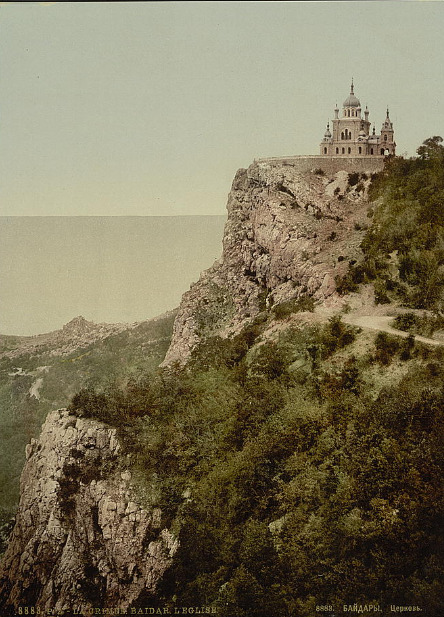
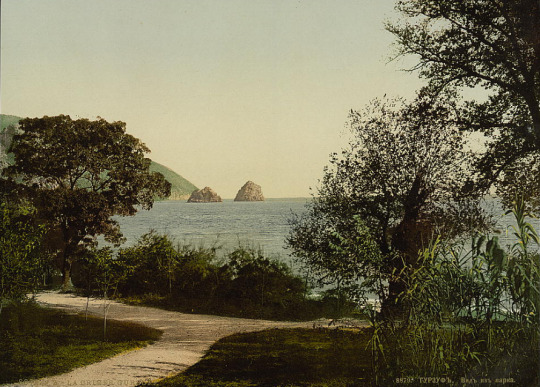
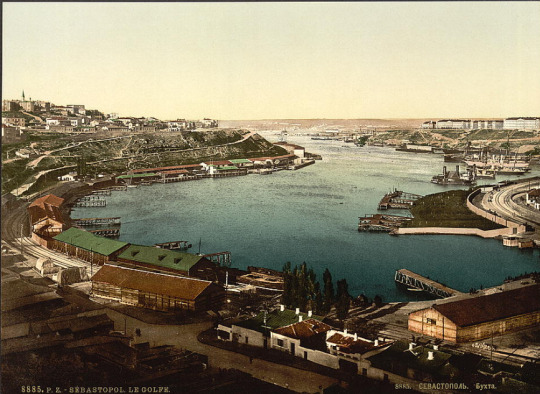


From the boulevard Yalta, the Crimea , Ukraine
2. The gulf, Yalta, the Crimea, Ukraine
3. Gurzuf from the Yalta Road, the Crimea, Ukraine
4. Gurzuf, the Crimea, Ukraine
5. The Crimea, Alupka. The Imperial palace, Ukraine
6. The church, Baidar, the Crimea, Ukraine
7. Gurzuf, from the Park, the Crimea, Ukraine
8. The gulf, Sebastopol, Ukraine
9. The Khan's palace, Bakhchysaraĭ, Ukraine
10. The harem, Bakhchysaraĭ, Ukraine
Photos were published between 1890 and 1900 and are part of The Photochrom Print Collection, which has almost 6,000 views of Europe and the Middle East and 500 views of North America. Published primarily from the 1890s to 1910s, these prints were created by the Photoglob Company in Zürich, Switzerland, and the Detroit Publishing Company in Michigan. The richly colored images look like photographs but are actually ink-based photolithographs, usually 6.5 x 9 inches.
Source https://www.loc.gov
#ukraine#eastern europe#photography#vintage photography#xix century#19th century#crimea#color photography#architecture#cities
248 notes
·
View notes
Text
Hi folks! I finally made myself some time – during my day-to-day job, will not lie to you – to write down a silly little idea I had while reading HtN:
My self-indulgent Judaeo-Christian mysticism, XIX Century, lesbian-revolutionaries AU Griddlehark fanfic that I needed to keep my job.

Rating: Mature
Relationships (main): Gideon Nav/Harrowhark Nonagesimus – although this will dip its toes in other places. This author is an Ianthe stan (in many ways thanks to another dweller of this den of cryptids).
Summary:
“In the year of our Lord 1847 – if one condescended to accept the practicality of the Gregorian calendar – Gideon Nav and Harrowhark Nonagesimus kneeled in contemplation”.
At the outset of the maturity of the XIX Century, while the dormant spirit of revolution is beginning to stir in Europe and half the world trembles under the weight of imperialism, eight exorcists are summoned by the Pope to clean the Vatican.
While people fight against the tide of history in the name of their self-determination, and while the Abrahamic denominations try to mend century’s old riffs in their struggle against an evil larger than their faith, Gideon Nav and Harrowhark Nonagesimus can only think in their freedom. Freedom from God, freedom from the dusty walls of the convent that locks them, freedom from each other.
I haven’t written anything with so much care for research as this since I was like… 20? Perhaps??? A couple of differences are that now I’m both a lawyer and a historian, so I guess my writing has gotten worse.
HOWEVER – I’m really excited about this! It is really the three things I can be confident about knowing:
Judeo-Christian mystic polemics;
The history of revolutions of the XIX and XX centuries;
International law (?).
#griddlehark#kirianthe#gideon x harrow#gtn#the locked tomb#harrowhark nonagesimus#harrow the ninth#gideon the ninth#ianthe tridentarius#coronabeth tridentarius#htn#ntn#nona the ninth#fanfic#eastern orthodoxy
12 notes
·
View notes
Note
Just an opinion on the is anti-latin american xenophobia the same in Catalonia as in Spain I would say in gwneral, yes.
First of all there ia a large Latin American immigrant population in Catalunya and that creates hostility from people who are against immigration. The common name calling exist too sudaca, panchito etc The xenophobia is not as bad ofc as Romani, Romanian and Magreb people face and Black and Indigenous looking Latinos will face it more.
On a deeper scale I think Catalunya even if its history with it was different created its social perception of Latam trought the lens of Spanish idea of the new world and Catalonia played a role in the late colonial economy (Cuba and Catalonia history is fascinating ngl) so I think the stereotypes associated to Latam are fairly similar if you see idk XIX literature of early havaneras. This gives some people today still the idea that all Latam is poor violent favelas and rainforest, some people exoticize Latina etc
All of this is just to say xenophobia does exist an when it appeard it is generally similar to Spain vet dufferent than in France for example where there are fewer Latinos. Ofc most people are not xenophobic, in Catalunya like in Spain they are more aware of Latam and its reality than in other parts of Europe and tons of Latinos visit and have the best time. Also there now a lot of Catalans of Latino origin now who can speak Catalan and people are aware of that.
Personally Ive never faced racism in Catalonia like I did living in Valencia as a teen in the 00s and though I had some encounters with xenophobia while working in tourism in Northern Catalonia (our clients where mostly Southern Catalonians) its the service industry and you interact with hundreds of ppl a day so something is bound to happen. For a read on immigrant experience from a Latino perspective in the 90s/00s I recomend 'Marron: Memorias' by Rocio Quillahuaman who immigrated with her family to Barcelona and writes in Spanish.
Agun this is said from a place of respect and love from Catalunya and its culture which I have learned by choice and I deeply appreciate and these are my personal views
Thank you so much for taking the time to answer! It's very interesting to read the experiences of other people here.
21 notes
·
View notes
Text
The Caffè Florian opened in St Mark's Square, where it still stands today, on 29 December 1720. Important people have passed through this café, such as: Lord Byron, Vivaldi, Goethe, Rousseau, Stravinski... y también Casanova.
El Caffè Florian abrió sus puertas en la Plaza de San Marcos, donde sigue permaneciendo, el 29 de diciembre de 1720. Por este café han pasado personajes importantes, como: Lord Byron, Vivaldi, Goethe, Rousseau, Stravinski... y también Casanova.
Il Caffè Florian aprì in Piazza San Marco, dove si trova tuttora, il 29 dicembre 1720. In questo caffè sono passati personaggi importanti, come: Lord Byron, Vivaldi, Goethe, Rousseau, Stravinski… y también Casanova

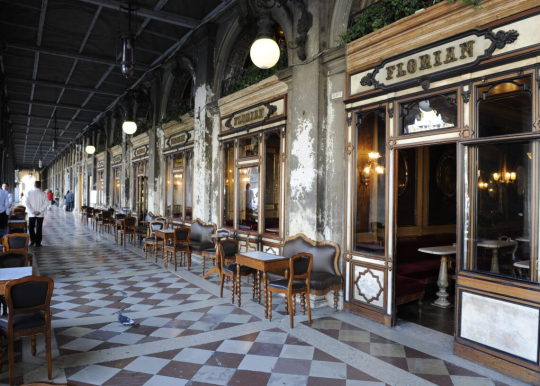
(English / Español / Italiano)
The Europe's oldest Café was opened on 29 December 1720 by Floriano Francesconi and was called "Alla Venezia Trionfante" (To Triumphant Venice), although the clientele later renamed it "Caffè Florian" in honour of its owner.
While the finest wines and coffees from the Orient, Malaysia, Cyprus and Greece were served, history was unfolding outside. Its windows witnessed the splendour and fall of the Serenissima Republic of Venice and the secret conspiracies against French and then Austrian rule. It is divided into small rooms connected by a corridor and has a huge terrace on St. Mark's Square for sunny days. The rooms are decorated in different styles;
*****
El Café más antiguo de Europa fue inaugurado el 29 de diciembre de 1720 por Floriano Francesconi y se llamaba “Alla Venezia Trionfante” (A la triunfante Venecia), aunque la clientela posteriormente lo rebautizó como “Caffè Florian” en honor a su dueño.
Mientras se servían los mejores vinos y cafés de Oriente, Malasia, Chipre y Grecia, la historia se desarrollaba afuera. Sus ventanas presenciaron el esplendor y la caída de la República Serenissima de Venecia y las conspiraciones secretas contra el dominio francés y luego el austriaco. Se encuentra distribuido en pequeñas salas unidas todos ellas, por un corredor y además, tiene una enorme terraza en la plaza San Marcos para los días soleados. Las salas están decoradas en distintos estilos.
*****
Il Caffè più antico d'Europa fu aperto il 29 dicembre 1720 da Floriano Francesconi e si chiamava "Alla Venezia Trionfante", anche se poi la clientela lo ribattezzò "Caffè Florian" in onore del suo proprietario.
Mentre venivano serviti i migliori vini e caffè provenienti dall'Oriente, dalla Malesia, da Cipro e dalla Grecia, all'esterno si svolgeva la storia: le sue finestre sono state testimoni dello splendore e della caduta della Serenissima Repubblica di Venezia e delle cospirazioni segrete contro il dominio francese e poi austriaco. È diviso in piccole sale collegate da un corridoio e dispone di un'enorme terrazza su Piazza San Marco per le giornate di sole. Le sale sono arredate in stili diversi.
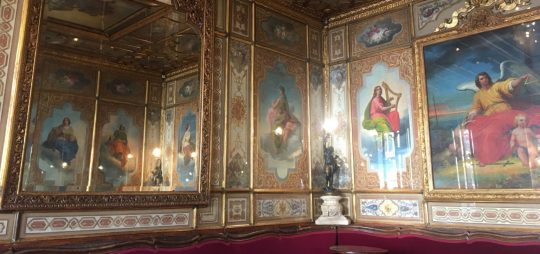
The Senate Hall. This is where the Venice Biennale was born.
La Sala del Senado. En ella nació la Bienal de Venecia.
La Sala del Senato. Qui è nata la Biennale di Venezia.
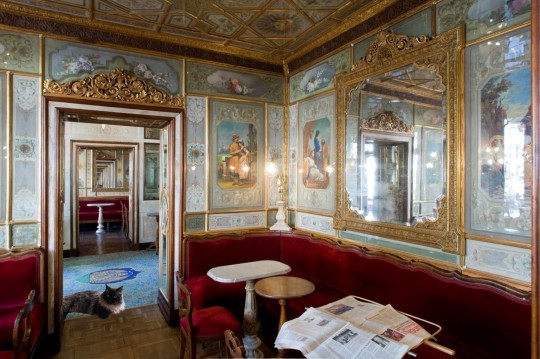
The Chinese room, the oldest and one of the two initial rooms.
La Sala China, la más antigua y una de las dos iniciales.
La Sala Cinese, la più antica e una delle due sale iniziali.
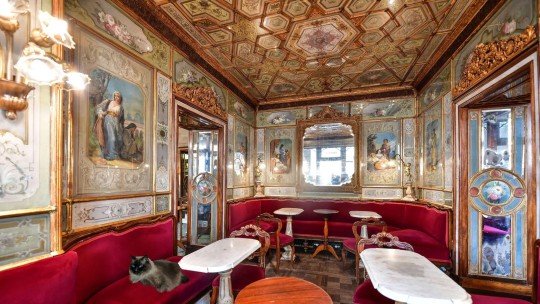
The Sala Orientale, added in 1750, although the present decoration dates from the 19th century.
La Sala Orientale, agregada en 1750, aunque la decoración actual es de s.XIX.
La Sala Orientale, aggiunta nel 1750, anche se la decorazione attuale risale al XIX secolo.
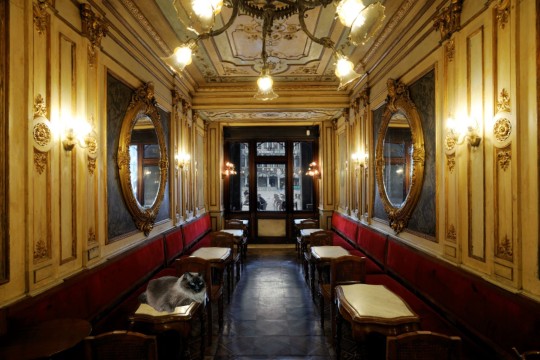
Hall of the Seasons, decorated with floral motifs and women in long dresses symbolising the seasons.
Sala de las Estaciones, decorada con motivos florales y mujeres de largos vestidos que simbolizan las estaciones.
Sala delle Stagioni, decorata con motivi floreali e donne in abiti lunghi che simboleggiano le stagioni.
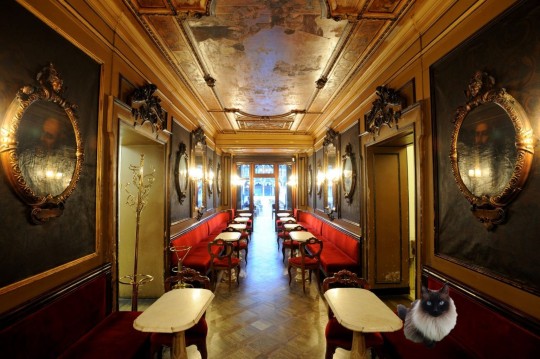
The Hall of Illustrious Men, ten illustrious Venetians, such as Titian and Marco Polo, look down on us from the wall.
La Sala de los Hombres Ilustres, diez venecianos ilustres nos observan desde la pared, como Tiziano o Marco Polo.
La Sala degli Uomini Illustri, dieci illustri veneziani, come Tiziano e Marco Polo, ci guardano dal muro.

The Liberty room, added, in 1920, with a more modern atmosphere, decorated with mirrors with painted floral motifs and Murano glass chandeliers.
La Sala de la Liberty, agregada, en 1920, con un ambiente más moderno, decorada con espejos con motivos florales pintados y lámparas de cristal de Murano.
Nel 1920 è stata aggiunta la Sala Liberty, con un'atmosfera più moderna, decorata con specchi con motivi floreali dipinti e lampadari in vetro di Murano.
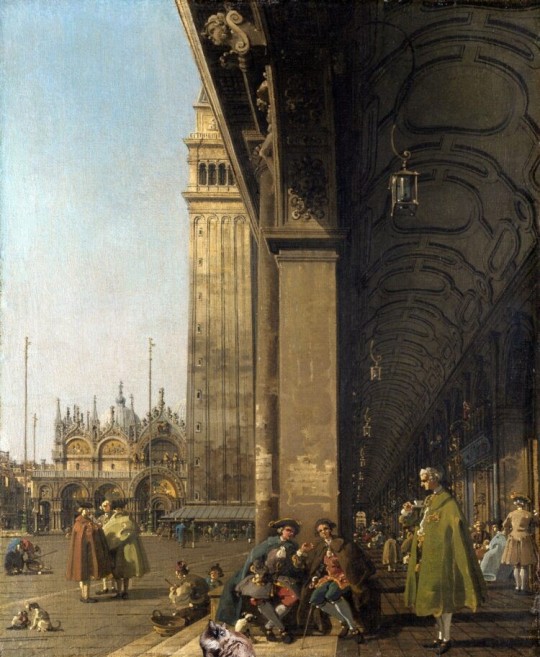
The Caffè Florian in a painting by Canaletto in the National Gallery in London.
The Florian was the first place that allowed women in Venice, which explains why Casanova chose it for the hunt for his conquests.
El Florian fue el primer local que permitió la entrada a mujeres en Venecia, lo que explica porqué Casanova lo eligió para la caza de sus conquistas.
Il Florian fu il primo locale che permise alle donne di entrare a Venezia, il che spiega perché Casanova lo scelse per la caccia alle sue conquiste.
Fuente: texto extracto de venecisima.com
#venezia#venice#venecia#piazza san marco#s.XVIII#18th century#florian cafe#lord byron#vivaldi#stravinsky#rousseau#goethe#casanova#st mark's square
8 notes
·
View notes
Text

HISTORIA DE LA ARQUEOLOGÍA JAPONESA Y EL PENSAMIENTO CIENTÍFICO.
Capítulo 1:
Sean bienvenidos, japonistasarqueológicos, a una nueva entrega de arqueología nipona, vista desde un punto de vista filosófico, una vez dicho esto pónganse cómodos qué empezamos.
—
Seguramente, todos nos hacemos las mismas preguntas cuando se nos pregunta determinados temas de historia y de arqueología. ¿Quiénes eran nuestros antepasados y por qué llegaron a este determinado lugar y no a x? ¿De qué medios disponían para lograr determinadas hazañas históricas? En nuestro caso nos centraremos en dos preguntas determinadas ¿Quiénes fueron los primeros pobladores del archipiélago japonés? Y de ver cómo dicha idea ha llegado a nuestros días sin una respuesta clara, ya que tanto arqueólogos, historiadores, antropólogos, entre otros, han intentado dar una posible respuesta a una de las mayores incógnitas de la historia de la arqueología japonesa.
—
¿Cuándo surgió la arqueología japonesa propiamente dicha? La historia de Japón es un tanto complicada, debido a que la ciencia propiamente dicha no nace hasta finales del siglo XIX, para ser más exactos 12 de abril 1877 ¿Cuándo surgen las sociedades arqueológicas, antropológicas y el laboratorio de antropología en Tokio? Además, tuvieron mucha influencia de gente tanto de Europa como de Estados Unidos, ya que tenían una gran influencia para aquel momento y mencionaremos algunos y a uno de los arqueólogos más destacados del mundo japonés.
—
¿Cuándo surgen las sociedades arqueológicas, antropológicas y el laboratorio de antropología en Tokio? Para responder a dicha pregunta: A partir de 1880,vino un proceso gradual de institucionalización a la arqueología, generando un nuevo marco académico y universitario: Dando lugar al nacimiento de la Sociedad Antropológica de Tōkyō 1884, se creó el Laboratorio de Antropología en la Universidad de Tōkyō 1888,la fundación de la Sociedad Arqueológica se fundó en Japón en 1895.
—
Espero que os haya gustado y nos vemos en próximas publicaciones que pasen una buena semana.
HISTORY OF JAPANESE ARCHEOLOGY AND SCIENTIFIC THOUGHT.
Chapter 1:
Welcome, Japanesearchaeologicalists, to a new installment of Japanese archaeology, seen from a philosophical point of view. Having said that, get comfortable and let's begin.
—
Surely, we all ask ourselves the same questions when we are asked certain topics in history and archeology. Who were our ancestors and why did they arrive at this certain place and not x? What means did they have to achieve certain historical feats? In our case we will focus on two specific questions: Who were the first settlers of the Japanese archipelago? And to see how this idea has reached our days without a clear answer, since archaeologists, historians, anthropologists, among others, have tried to give a possible answer to one of the biggest unknowns in the history of Japanese archaeology.
—
When did Japanese archeology itself emerge? The history of Japan is somewhat complicated, because science itself was not born until the end of the 19th century, to be more exact April 12, 1877 When did the archaeological and anthropological societies and the anthropology laboratory emerge in Tokyo? In addition, they had a lot of influence from people from both Europe and the United States, since they had a great influence at that time and we will mention some of them and one of the most prominent archaeologists in the Japanese world.
—
When did the archaeological and anthropological societies and the anthropology laboratory emerge in Tokyo? To answer this question: Starting in 1880, a gradual process of institutionalization of archeology came, generating a new academic and university framework: Giving rise to the birth of the Tōkyō Anthropological Society 1884, the Anthropology Laboratory was created at the University from Tōkyō 1888, the foundation of the Archaeological Society was founded in Japan in 1895.
—
I hope you liked it and see you in future posts, have a good week.
日本の考古学と科学思想の歴史。
第1章:
日本の考古学者の皆さん、哲学的観点から見た新しい日本考古学へようこそ。
—
確かに、歴史や考古学の特定のトピックを尋ねられたとき、私たちは皆同じ質問をするでしょう。 私たちの祖先は誰でしたか、そしてなぜ彼らは x ではなくこの特定の場所に到着したのでしょうか? 彼らは特定の歴史的偉業を達成するためにどのような手段を必要としたのでしょうか? 私たちの場合は、2 つの具体的な質問に焦点を当てます。日本列島の最初の入植者は誰ですか? そして、考古学者、歴史家、人類学者などが、日本の考古学史上最大の未知の一つに可能な答えを与えようとして以来、この考えが明確な答えがないまま、どのようにして現代に至ったのかを見てみましょう。
—
日本の考古学自体はいつ頃から生まれたのでしょうか? 日本の歴史はやや複雑です。科学そのものが誕生したのは 19 世紀末、より正確には 1877 年 4 月 12 日です。考古学人類学協会と人類学研究所が東京に誕生したのはいつですか? さらに、彼らは当時大きな影響力を持っていたため、ヨーロッパとアメリカの両方の人々から多くの影響を受けていました。彼らの一部と日本の世界で最も著名な考古学者の一人についても言及します。
—
東京に考古人類学会や人類学研究室が誕生したのはいつですか? この質問に答えるには、1880 年から考古学の制度化が段階的に進み、新しい学問と大学の枠組みが生まれました。1884 年に東京人類学会が誕生し、1888 年に東京で人類学研究室が大学に設立されました。考古学協会の財団は 1895 年に日本で設立されました。
—
気に入っていただければ幸いです。今後の投稿でお会いしましょう。良い一週間をお過ごしください
#日本#歴史#考古学#哲学#人類学#連合#国家#科学#東京都#Japan#History#Science#Tokyo#unesco#ユネスコ#geography#prehistory#archeology
20 notes
·
View notes